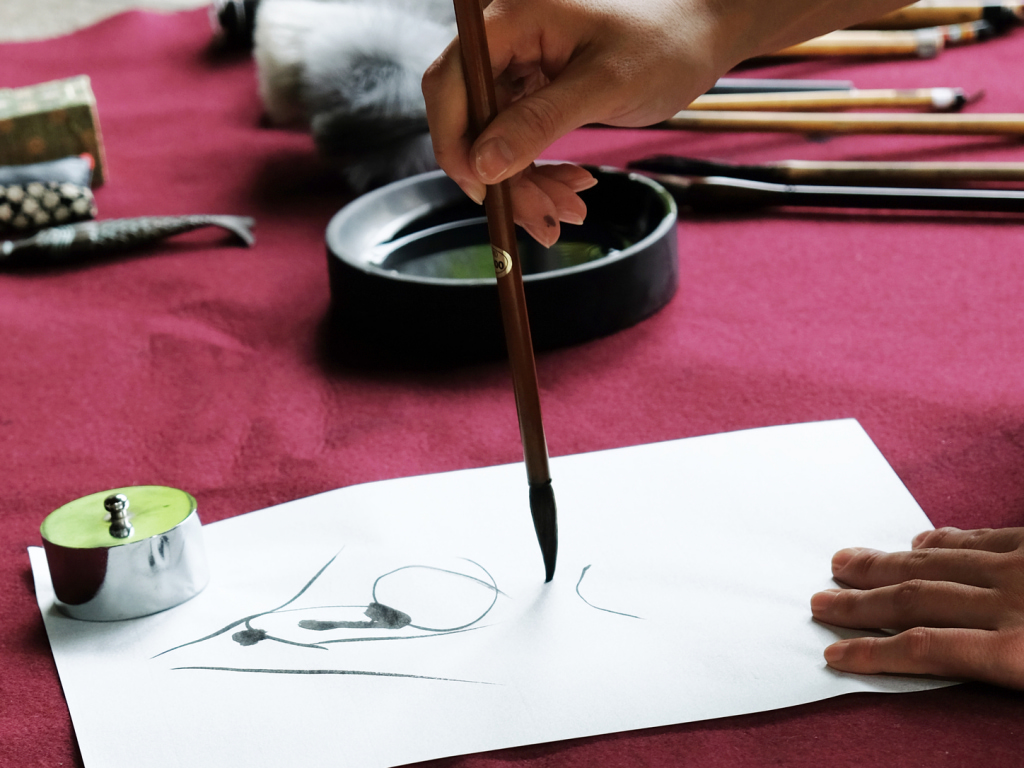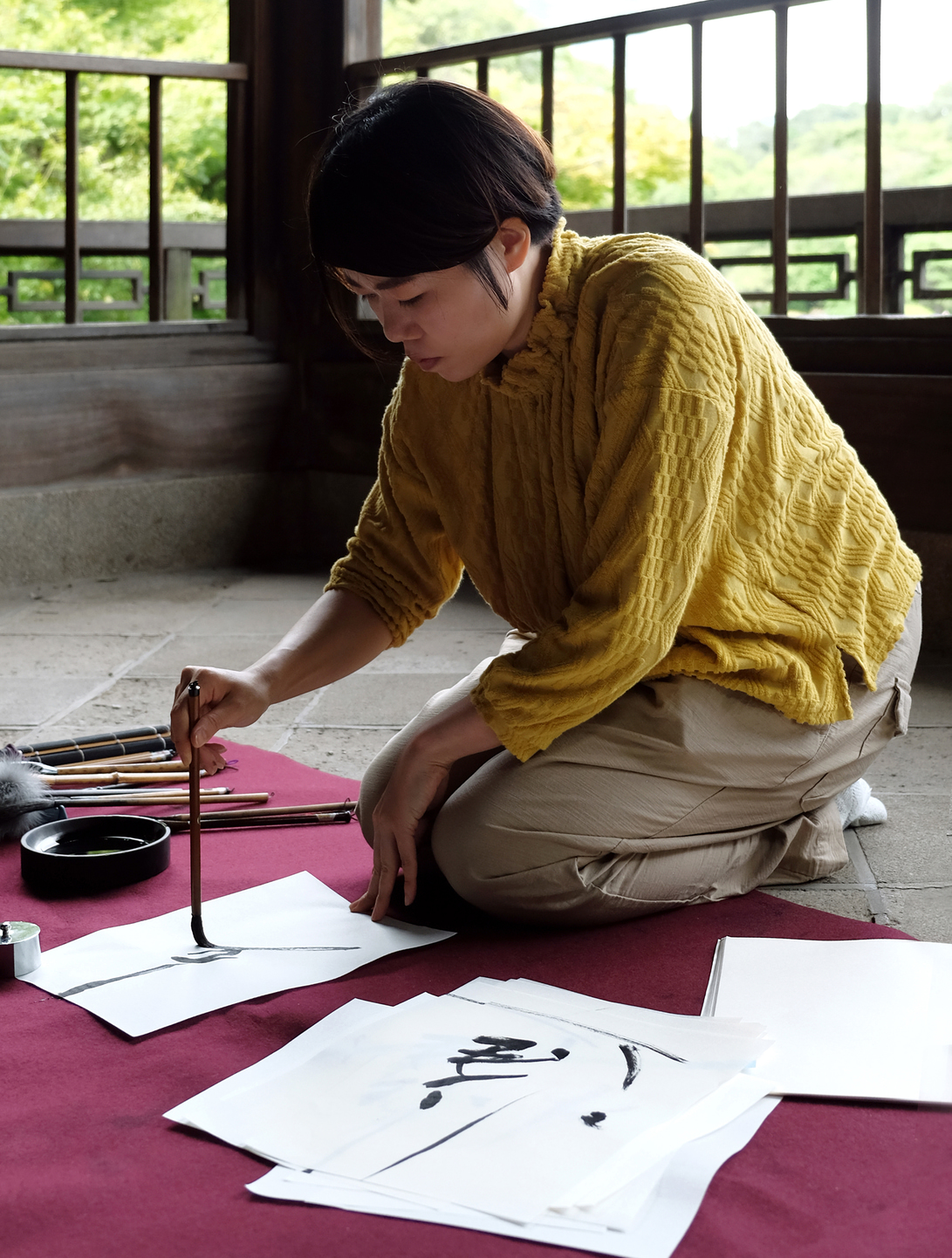Japanese calligraphy, or shodo, is the ancient art of writing beautifully. It uses all three Japanese scripts and often evokes images of traditional settings and elderly sensei. We met up with Wakana Shingae, a young woman practicing this old craft infused with her own distinctive style.
What is a typical day like?
Each day can be completely different! I supervise lessons at a calligraphy school, so most days I go teach there and then I work on commissions from private clients. I also work on pieces for exhibitions. Most of my students are young Japanese children, about preschool-aged to middle school-aged. I also teach adults, usually from abroad, in groups or private lessons.
Why did you choose this job?
I started learning shodo around age seven, and it just happened that the school my parents found in our neighborhood was a pretty famous one. I took classes there throughout my school years. When I was in middle school, I took some high school entrance exams and one school had an art division specializing in shodo. I’m still not sure why — perhaps they made a mistake — but I got in to that one. Back then I wasn’t very good, maybe average at best. That school was the top institution for shodo in Japan at the time and there I studied the art every day for three years. When I had to consider my options for university, I’d been studying shodo for so long I realized I could only go to a school where I could specialize in that.
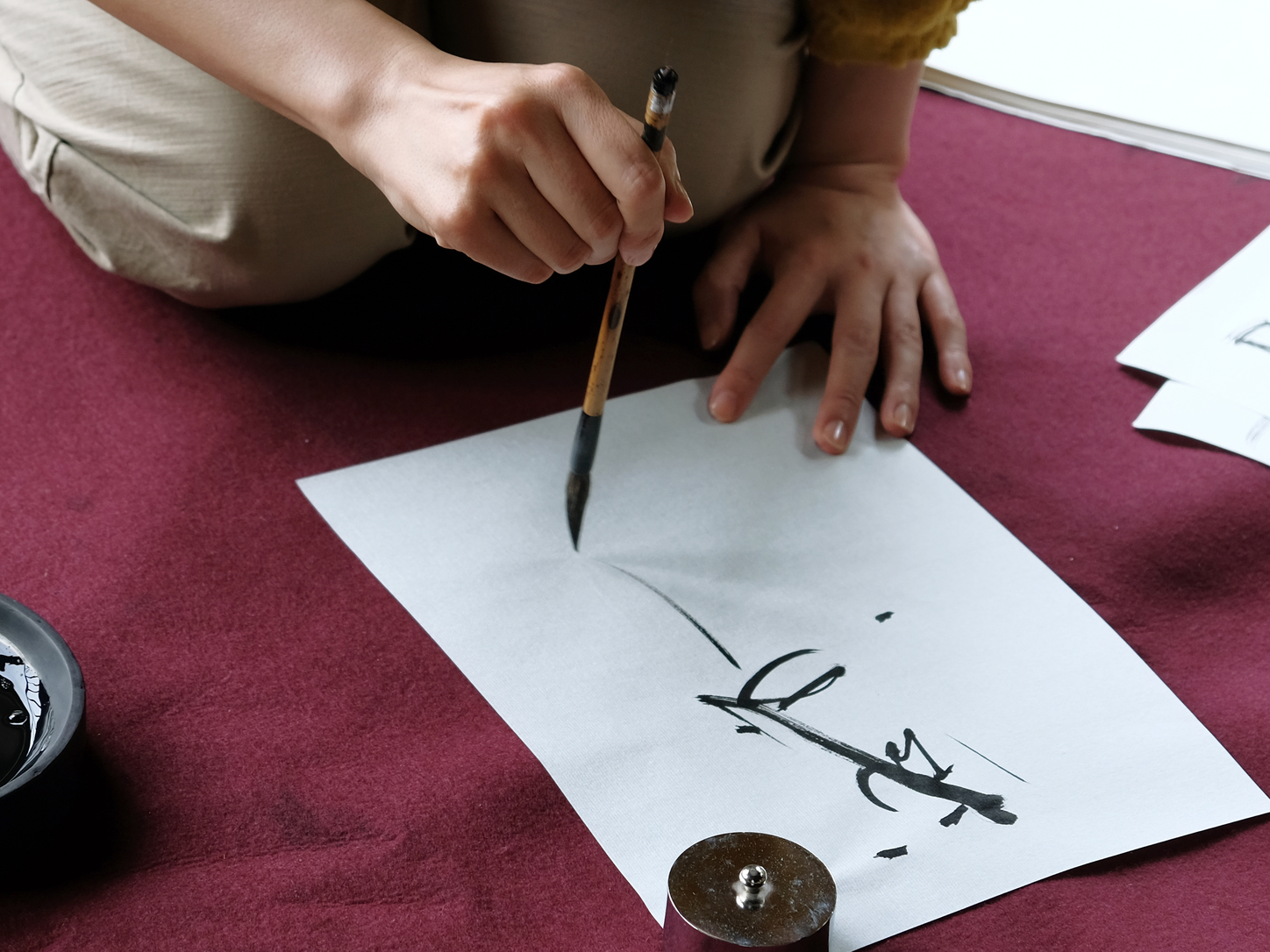
Once I graduated university, though, I realized my life had been all about shodo and I wanted to do something totally different. So I worked at a clothing store and taught at a school. While doing that, I understood that maybe I wasn’t cut out for other things and that I really loved doing it and sharing my work! I wanted to create more and share my feelings! Also, through shodo, I could meet people from all over the world and work with kids, both things I’d always wanted to do. Shodo is the only thing in life for me and I have nothing else. I returned to the craft and became a freelance calligrapher.
How do you become a Japanese calligrapher?
You don’t need any kind of certification — you don’t even need to go to school. If you say you are a shoka (Japanese calligrapher) then you are one. Although you probably need the skills to prove it! [Laughs]
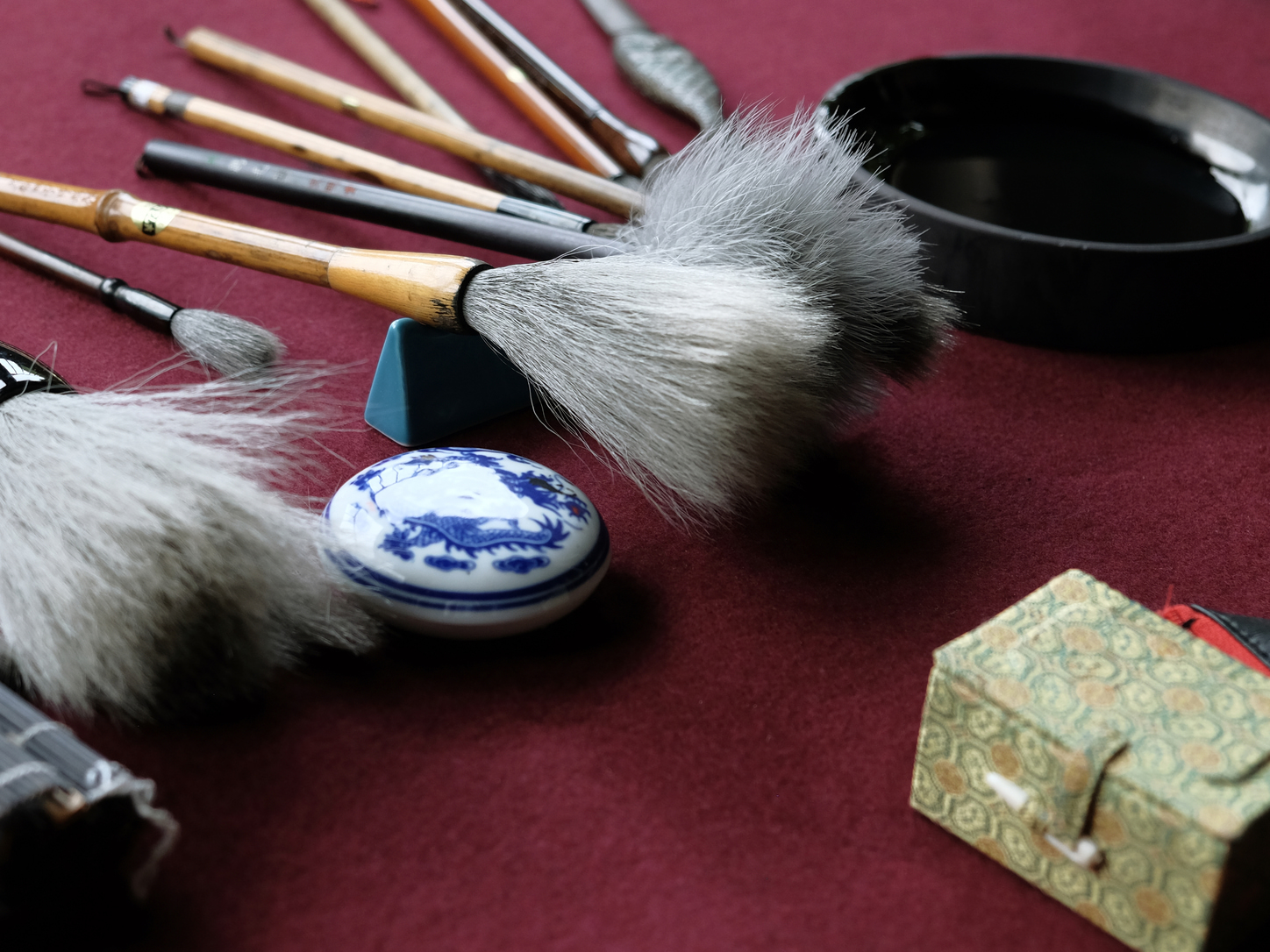
How did you create your own style?
Through practice. I study many different styles to become better. I think it’s important to study the classic texts, known as koten. If you don’t do that then you probably can’t succeed. I still study many different styles to become better and continue developing my own voice. I also study kana-style shodo under a teacher to improve.
Back when I was doing this in high school, there was no internet and shodo felt kind of lame. People around me, myself included, thought it was old-fashioned and boring. It felt old-fashioned and dark, and uncool. Sometimes it’s the style or the frame around the work that makes it look old. To get away from that image, I create casual pieces that people can put up in their living rooms. I want to continue practicing the classic style, but I also want produce creations that people feel they can enjoy anywhere.
What’s the most important thing about being a calligraphy artist?
This is something that isn’t just for calligraphy artists, but I feel the most important thing is to not be satisfied with the way things are now. There’s always room for improvement. The way I see it, shodo is something you are always learning to do your whole life. Of course, you can learn new things from classic works (koten), but you can also learn them from all genres.
I wanted to throw my brush across the room in frustration more than once
What’s hardest about the job?
Creating a piece from scratch can be tough, but it’s also a lot of fun. Of course, there’s often a feeling of dissatisfaction with your own work. I’ve wanted to throw my brush across the room in frustration more than once. I think that’s about it though.
What’s the best part about the job?
The fact that my high school dream came true. It gives me joy every day! Also, I love connecting with all kinds of people through my work. I get to meet people of all ages, from different countries, and interesting people with exciting jobs. The thing I love most is that moment where the feeling I’ve imbued into a piece connects with others. I can’t explain that feeling in words, but I can express it through my work. That’s why I love shodo and will never get tired of it.
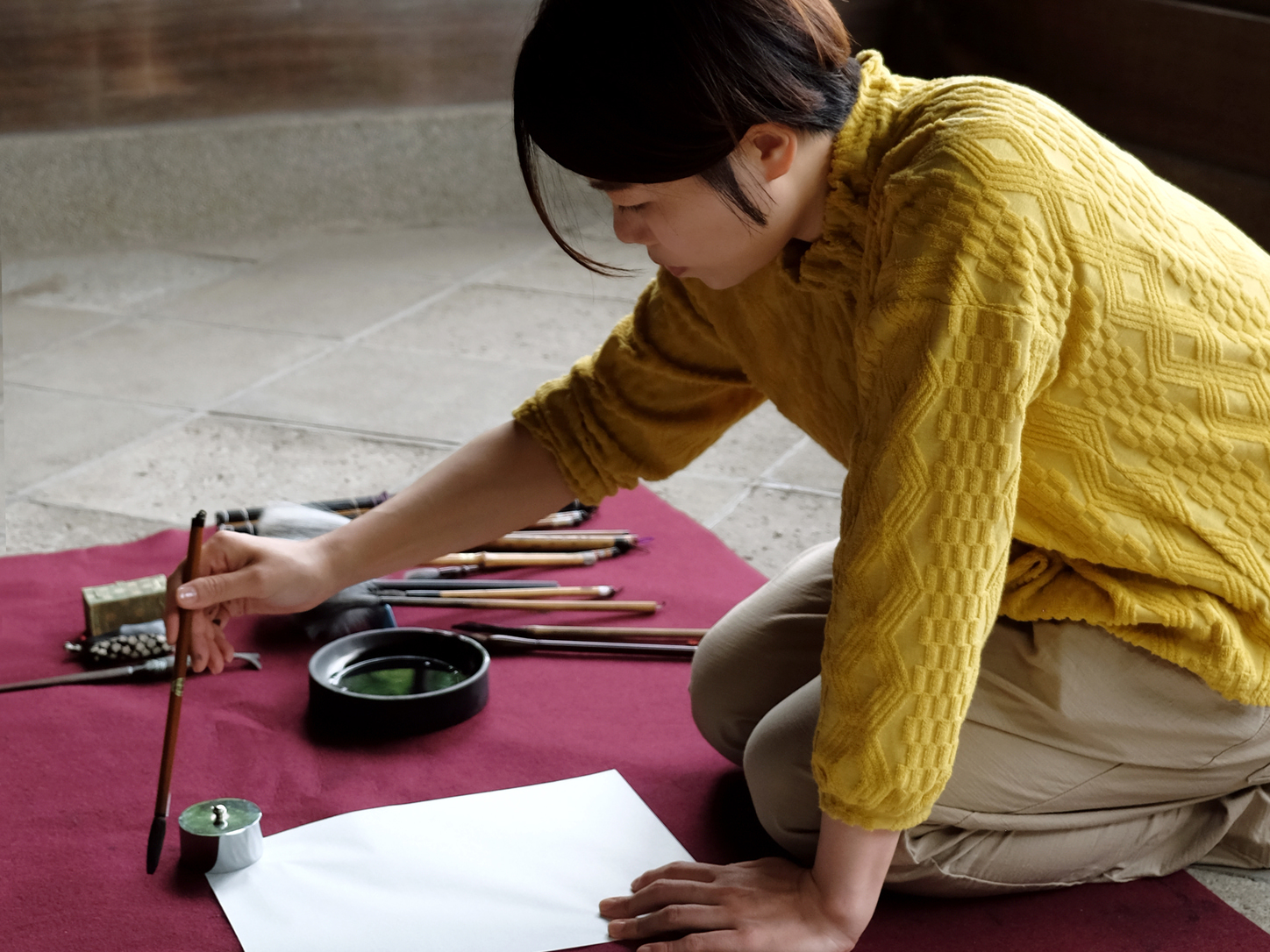
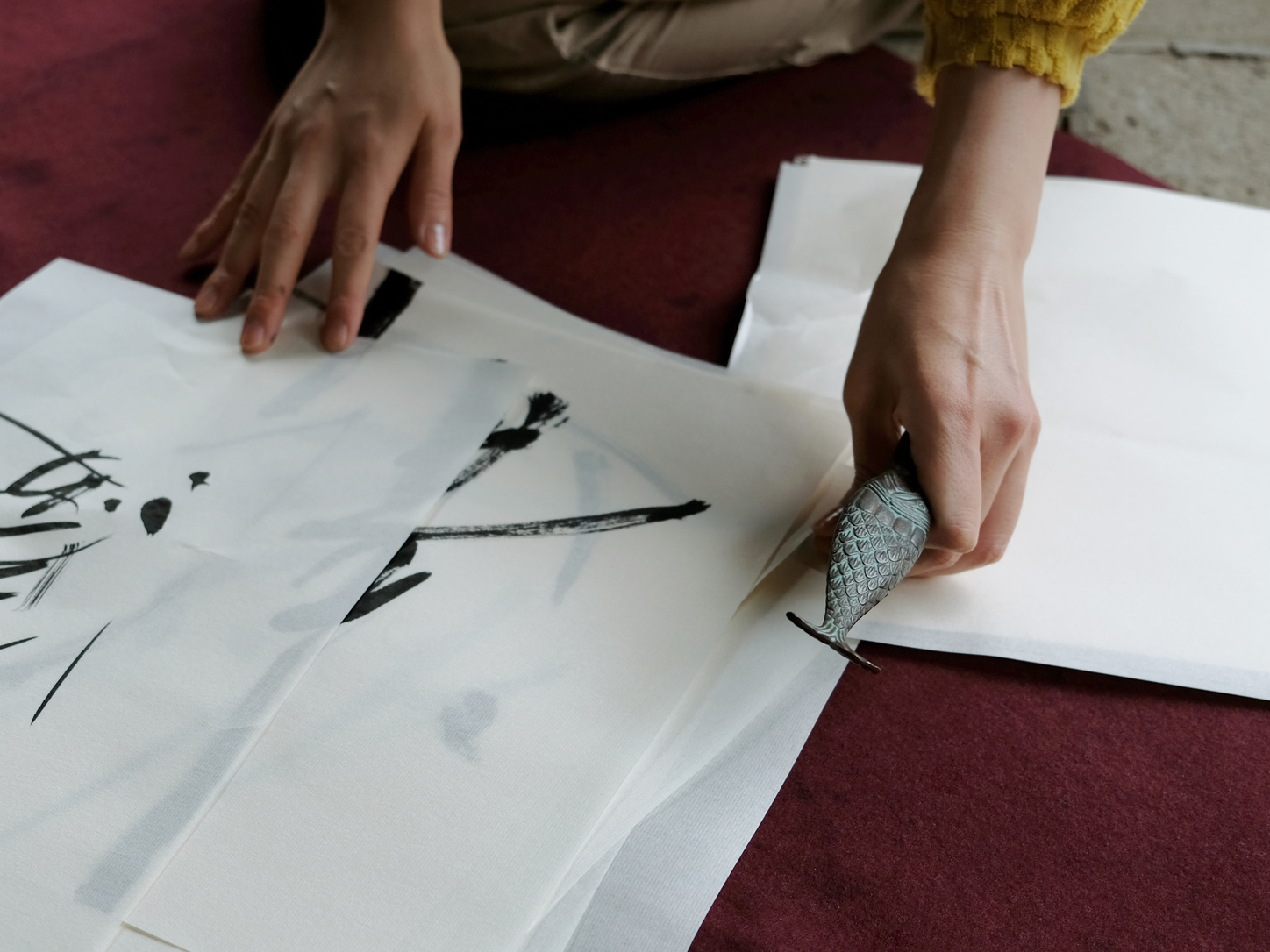
What’s the weirdest thing you’ve experienced while working?
Well, since I teach children, I have quite a few stories. If I turn my attention away for a second, something can happen. It’s so funny! I’ve turned around to find kids’ faces completely covered in ink. The youngest kids I teach are four years old and sometimes I see them licking their calligraphy brush! That calls for an immediate mouth rinse.
Advice to those who want to give it a go?
Please, give it a try! I think it can seem difficult but it’s so much fun! The fragrance of the ink and the sound of the brush sliding across the paper have soothing effects and are great for stress relief. I’m often asked what I think about when I work, but I don’t think about anything. I really think about nothing at all. If I start thinking, my hand stops moving. Writing is to experience “a time of emptiness.” I think that if you spend a lot of time typing on your phone or at your computer, you should switch to a brush and try writing through a more tactile experience.
Also, I think whatever you’re learning, there will be a time when you get sick of it. But if you can get over that, it’s well worth it in the end. I quit once, completely. I didn’t want to look at anything calligraphy-related, I didn’t want to do it — I even couldn’t stand the smell of ink for a while!
Book a class:
Wakana Shingae doesn’t speak much English but offers private lessons for those who speak some Japanese either at home or other locations.
Contact via her website: www.wakanashingae.com or Instagram: @wakanashingae
Photographs by Rose Vittayaset
Updated On April 26, 2021

